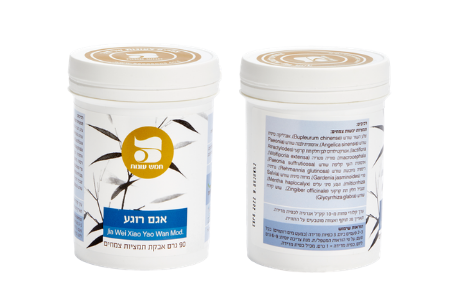הפורמולה ״אגם רוגע״ מבוססת על הפורמולה הסינית הקלאסית Jia Wei Xiao Yao San שמקורה בכתבים הסינים מהמאה ה- 16. זוהי הפורמולה הנפוצה והשימושית ביותר ברפואה הסינית לאיזון הורמונלי ולהסדרת המחזור החודשי.

| שם עברי | שם פרמוקולוגי | שם בוטני | Pin Yin |
| צלע השור חלק תת קרקעי | Radix Bupleuri | Bupleurum Chinense | Chai Hu |
| אנג'ליקה סינית חלק תת קרקעי | Radix Angelicae Sinensis | Angelica sinensis | Dang Gui |
| אדמונית לבנה חלק תת קרקעי | Radix Paeonia Lactiflorae | Paeonia Lactiflora | Bai Shao Yao |
| אטרקטילודוס לבן חלק תת קרקעי | Atractylodes macrocephala | Atractylodes macrocephala | Bai Zhu |
| פוריה פטריה | Sclerotum Poriae Cocos | Wolfiporia extensa | Fu Ling |
| אדמונית העץ קליפת שורש | Cortex Moutan Radicis | Paeonia Suffruticosa | Mu Dan Pi |
| רהמניה מיובשת חלק תת קרקעי | Radix Rehmanniae Glutinosae | Rehmanniae glutinosae | Sheng Di Huang |
| גרדניה, פרי | Fructus Gardeniae Jasminoidis | Gardenia Jasminoides | Zhi Zi |
| מרווה סינית חלק תת קרקעי | Radix Salviae Miltiorrhizae | Salvia miltiorrhiza | Dan Shen |
| מנטה שחורה \ סינית | Mentha Haplocalyx | Bo He | |
| זנגביל חלק תת קרקעי | Rhizoma Zingiberis Officinalis Recens | Zingiber Officinale | Sheng Jiang |
| שוש קירח חלק תת קרקעי | Radix Glycyrrhizae Uralensis | Glycyrrhiza glabra | Zhi Gan Cao |